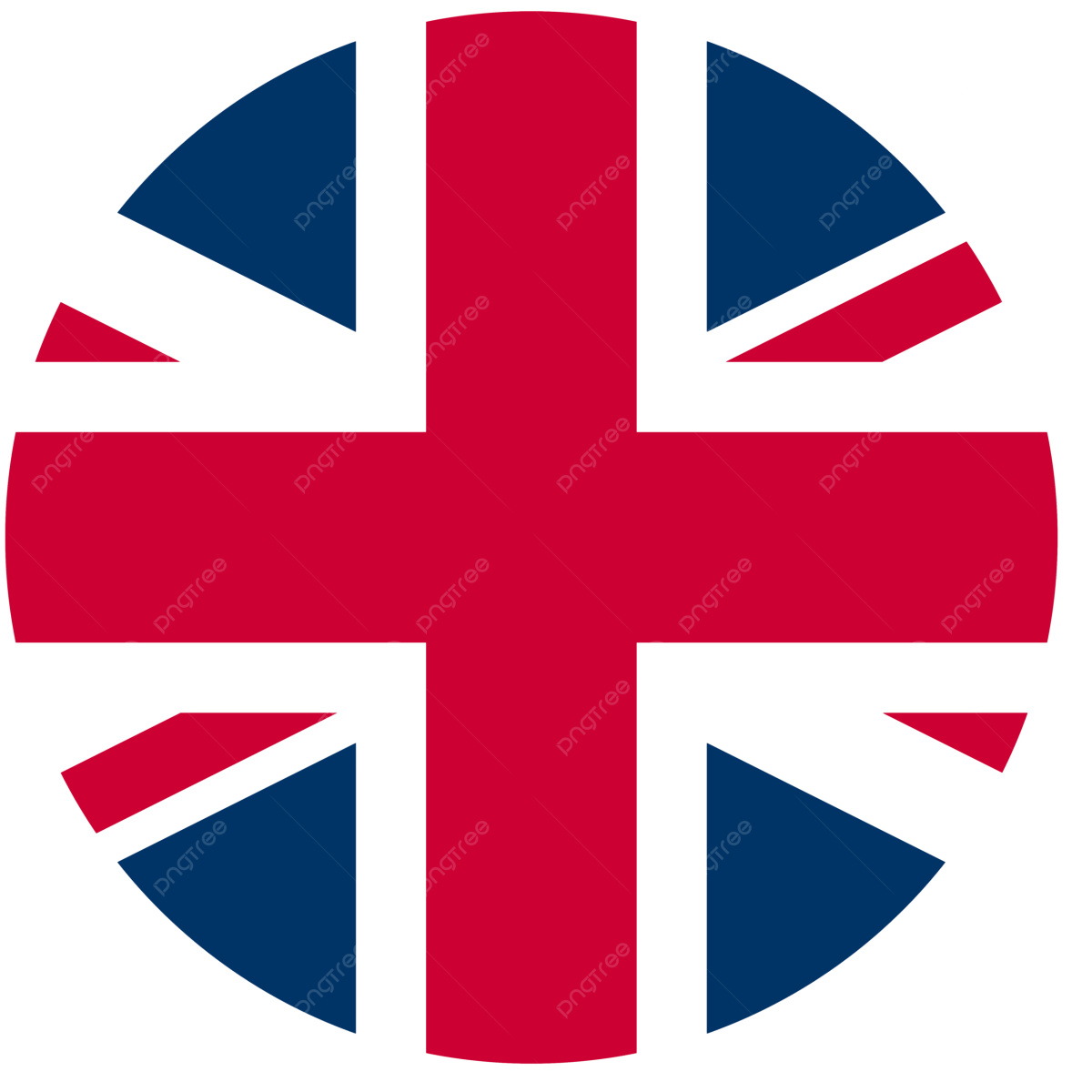Great listing photos and confident showings start with the right plan. In this guide, we map the essentials of staging home services so agents can brief sellers quickly and avoid costly missteps. With Bella Staging, you will see practical examples, clear timelines, and pricing factors that help you prioritize rooms, coordinate installs, and launch listings that attract qualified buyers fast.
Highlights
-
Prioritize Vacant rooms: first, stage living, kitchen, primary for photos.
-
Book earlier: to cut delays, lock installers and MLS photo windows.
-
Use virtual staging: only as add-on, never replacement for showings.
What is Staging Home Services?
Staging home services are coordinated actions that shape how a property photographs and feels during showings. They combine furniture selection, styling, and light updates to present a clear lifestyle to buyers. The goal is consistent visuals that support pricing strategy and reduce time on market.

Projects typically include a consult, an agreed scope, installation, photography, showings, and de-stage. Vacant listings rely on curated furnishings to create scale and warmth, while Occupied homes focus on editing and targeted accents. Clear priorities keep costs predictable and ensure the rooms that drive first impressions look their best.
-
Define the purpose: Present lifestyle and scale that buyers expect.
-
Choose the mode: Vacant installs or Occupied refresh, based on need.
-
Sequence the work: Consult, install, style, photos, and showings.
How to Choose The Right Staging Home Services?
Selecting the right option depends on property condition, timeline, and comps. Agents should match service depth to marketing goals and expected days on market. Start by ranking rooms that influence photos and tours, then decide between partial and full installations.

Evaluate access constraints, inventory quality, and vendor reliability. Ask for a room-by-room plan, timelines, and a clear rental schedule. Align installation with the photography date and build float for touch-ups. The right choice blends impact rooms, cohesive styling, and realistic scheduling that protects the launch window.
-
Match to goals: Pick services that support pricing strategy.
-
Prioritize rooms: Focus on spaces that anchor buyer perception.
-
Protect timeline: Plan around photography and showing schedules.
Service scope, timelines, and pricing
This section explains scope decisions, rhythms, and cost drivers so you can forecast budget and timing accurately. It also highlights when to use a site visit versus a virtual consult, how to plan backward from photography, and which variables commonly shift quotes for a home staging service within staging home services projects.

A typical engagement flows from consult to proposal, install, photography, showings, then de-stage. Clarify access, parking, elevator constraints, and HOA rules upfront to prevent rework. Align install timing with photographer availability, and keep a buffer for minor punch-list fixes. For multi-offer neighborhoods, compress to a rapid timeline; for unique properties, allow extra styling time. Our team at Bella Staging coordinates inventory selection, logistics, and room priorities so agents can confirm scope confidently.
-
Define scope early: To prevent change orders and timeline slips.
-
Lock photo date: First, schedule backward to coordinate trades.
-
Confirm access needs: Keys, codes, parking, elevator, COI.
Site visit vs virtual consult for home staging service
Choose the assessment method that best fits property complexity and schedule. Larger or unusual layouts benefit from an in-person walkthrough, while straightforward refreshes often suit a virtual consult with photos and dimensions.
An on-site consultation captures light, scale, and flow, which reduces furniture misfits and accessory shortfalls. Virtual consults work when you already know target rooms and only need a prioritized to-do list. Both should deliver a room-by-room plan, a short rationale, and a preliminary quote range. For a neutral overview of staging’s purpose, see this concise industry definition reference.
-
Use on-site: For scale, light, and complex traffic patterns.
-
Use virtual: For quick refreshes and clear priority rooms.
-
Deliverables checklist: Priorities, photos, quote range, rental timeline.
Turnaround windows and scheduling
Time boxing improves outcomes. Plan backward from the photography date, then place install and styling steps where they best protect that milestone.
A reliable rhythm is book consult, confirm scope, reserve inventory, install, style, photograph, go live on MLS, monitor showings, then de-stage. Build float for cleaning, paint touch-ups, and minor repairs. Coordinate photo rights and usage up front to avoid disputes or image takedowns with listing platforms, brokerages, or syndication partners. See this brief overview of MLS photo rights considerations.
-
Schedule backward: From photos to avoid last-minute compromises.
-
Hold inventory: Once scope is approved to ensure availability.
-
Add buffer: For cleaning, touch-ups, and final styling.
Pricing variables and examples
Budget accuracy depends on rooms staged, inventory class, logistics, and rental duration. This section clarifies typical ranges and why quotes differ across properties.
Consults are usually a few hundred dollars, while full Vacant installs often run mid-four figures depending on room count and finishes. Premium inventory, stairs without elevators, and distant delivery zones increase labor and rental costs. National roundups summarize broad cost ranges for planning, which you should calibrate to your market and comps.
-
Scope drives cost: Rooms staged and inventory class matter most.
-
Logistics add: Stairs, distance, and access windows affect labor.
-
Term length counts: Monthly rentals and refresh visits add up.
See more: What Is Home Staging? 10 Hacks That Attract Buyers Instantly
Top 10 Home Staging Services Realtors Recommend
Below are the ten services agents request most, ordered for practical impact on photography, buyer perception, and time to market. Each service addresses a specific bottleneck in staging home services, from must-stage rooms in vacant listings to targeted refreshes in occupied homes. Where possible, combine fast wins, like photo-prep styling, with higher-leverage actions, like vacant staging for hero spaces. Keep messaging consistent across the listing, captioning, and tours.

Within staging home services, use virtual tools only to support, not replace, the in-person experience buyers expect at showings.
-
Sequence for photos: Stage rooms that drive thumbnails and tours.
-
Mix quick wins: Pair styling with high-leverage Vacant installs.
-
Message clearly: Align captions, tours, and on-site experience.
1. Meridith Baer Home full-service home staging
For vacant or occupied listings, end-to-end management reduces friction. A dedicated project lead coordinates rooms, logistics, and schedules to meet your marketing date.
They scope priorities, select furnishings, manage delivery and install, then style for photographs. This approach ensures consistent scale, palette, and flow across living areas and the primary suite. It also allows quick adjustments if pricing strategy changes. Pair with virtual imagery strategically to pre-market effectively without replacing on-site staging.
-
Single point: One lead from consult to de-stage for clarity.
-
Cohesive look: Furnishings sized and styled to the architecture.
-
Photo-ready: Installs timed to your photographer’s schedule.
2. Staging consultation
A consultant creates alignment with sellers before any rental decisions. It clarifies priorities, budgets, and expectations for the coming weeks.
Expect a room-by-room assessment, quick edits sellers can do themselves, and a phased plan. The written summary provides estimated ranges and options, so you can choose partial or full installs with confidence. Consultants also surface constraints early, like storage availability or HOA rules, keeping the project on track.
-
Clarify priorities: List impact rooms and immediate fixes.
-
Phase decisions: Choose partial now, expand if needed later.
-
De-risk budget: Ranges prevent surprises during install.
3. Vacant home staging
Vacant spaces need scale and warmth to photograph well. Strategic furniture and decor communicate lifestyle and flow.
Focus on the living room, kitchen, and primary suite first, then add secondary bedrooms if budget allows. Correct scale avoids the “too small” effect wide-angle lenses can create. Recent buyer-agent surveys continue to rank these rooms as most influential on purchase decisions, especially online.
-
Stage hero rooms: Living, kitchen, primary anchor buyer perception.
-
Right scale: Furnishings sized to room volume and sightlines.
-
Warm palette: Neutrals photograph cleanly and feel move-in ready.
4. Occupied refresh
When sellers remain in place, edit and augment rather than fully furnish. The goal is clean photos and comfortable showings.
Declutter, reorganize, and add accessories to unify palette and rhythm. Swap tired bedding and towels, and remove dated window treatments that darken images. Where appropriate, replace bulky items to open circulation. This preserves seller convenience while improving the photographic story of the home.
-
Edit first: Remove visual noise, reveal architecture and light.
-
Unify palette: Consistent textiles create calm, modern photos.
-
Improve flow: Adjust layouts for traffic and sightlines.
5. Partial staging for impact rooms
If the budget is tight, concentrate firepower. Stage the rooms that dominate thumbnails and tours.
Invest in a cohesive set for the living area and primary suite, then add kitchen styling for warmth. This trio drives first impressions, improves click-through, and frames the narrative for buyers who skim photos quickly. Expand to secondary spaces only if the comp set demands parity.
-
Maximize impact: Prioritize rooms most buyers judge first.
-
Control cost: Fewer rooms, higher quality pieces per room.
-
Stay flexible: Add secondary rooms if the market requires.
6. Photo-prep styling
Fine styling turns good installs into great photos. Small adjustments yield noticeable gains.
Think crisp bedding, balanced pillows, airy window treatments, and reflective accents that carry light. Coordinate with your photographer on sequencing and angles for the strongest hero images. A concise pre-shoot checklist keeps everyone aligned on the story.
-
Edit frames: Remove anything that distracts from architecture.
-
Add light: Mirrors, lamps, sheers lift exposure and mood.
-
Style vignettes: Bedside, console, and dining table moments.
7. Luxury staging packages
Premium listings demand proportion, finish level, and art direction consistent with comps. Scale and texture matter most.
Curate larger-scale upholstery, layered textiles, and statement art. Coordinate finishes with stone, millwork, and metal tones already present. Luxury packages also allow deeper accent inventories for seasonal refreshes during longer marketing cycles.
-
Match scale furnishings sized to volume and ceiling height.
-
Layer textures depth photographs richer than flat minimalism.
-
Curate art anchor views and balance empty expanses.
8. Virtual staging add-ons
Use virtual imagery to accelerate pre-marketing or test styling directions before committing inventory. Keep renderings honest and attainable.
Pair digital updates with clear captions, then translate winning ideas to the real space. For realistic, market-ready visuals, collaborate through our virtual staging service, which complements on-site work rather than replacing it. Maintain consistency between renders and the experience buyers will have at showings.
-
Set expectations: Label images, avoid unrealistic transformations.
-
Test concepts: Trial styles digitally, deploy the best on-site.
-
Keep consistent: Match renders to the staged outcome.
9. Furniture and decor rental
Rentals let you scale up or down with market conditions. Terms should map to expected days on market.
Begin with a 30-day base, then extend in monthly increments if strategy shifts. Refresh accessories at extensions to keep photos and tours feeling current. Reserve delivery and pick-up windows that work around showings to minimize disruption.
- Align term: Match rental length to DOM forecasts.
- Refresh accessories: Small swaps keep visuals feeling new.
- Book windows: Schedule pick-ups around buyer traffic.
10. Color and finishes consulting
Small finish changes photograph like major upgrades. Color, hardware, and lighting temperature drive cohesion.
Choose neutral wall colors that flatter flooring and fixed materials, then align hardware finishes to reduce visual noise. Replace harsh bulbs with consistent, warm color temperatures that photograph cleanly. Where full renovations are impractical, plan targeted updates using virtual renovation to preview outcomes before committing.
- Pick neutrals: Walls that unify floors, stone, and tile.
- Coordinate metals: Limit finishes for calmer, cohesive images.
- Warm lighting: Consistent bulbs improve photo color and feel.
Virtual and add-on options that convert
Virtual tools, photo-day kits, and refresh visits help listings stay sharp from launch through offer acceptance. Used well, they shorten the path from first click to showing and strengthen your staging home services strategy.
Start with realistic renders that preview scale and palette, then execute the best ideas on site. Prepare kits for bed, bath, and dining vignettes to lift photos without a full install. If DOM extends, schedule micro-refreshes to re-energize thumbnails and tours. For complex furniture swaps in photos, consider AI item removal to illustrate options ethically.
- Pair tools: Virtual tests plus targeted on-site actions.
- Kit essentials: Linens, greenery, table settings ready for photos.
- Plan refreshes: Update accessories if strategy or season shifts.
Virtual staging plus guided edits
This hybrid approach previews a vision and then delivers it physically. It keeps marketing honest while speeding decisions.
Render multiple furniture scales, select the winner, and execute. Use captions that explain what is virtual, then ensure showing mirror expectations. This builds buyer trust and reduces surprise at walk-throughs.
- Prototype styles: Test scale, palette, layout options quickly.
- Caption clearly: Distinguish virtual from installed elements.
- Deliver match: Ensure showings reflect the marketing.
Photo-day styling kits
Prepared kits eliminate scramble on shoot day. The result is cleaner, faster sessions and stronger images.
Stock bedding in standard sizes, wrinkle-free textiles, neutral florals, and lamp bulbs that match color temperature. Coordinate shot order with your photographer to feature the best spaces first and maintain consistent exposure throughout the set.
- Standardize sizes: Linens ready for quick bed makeovers.
- Unify bulbs: Match temperatures for consistent color.
- Sequence shots: Lead with strongest hero rooms.
Rental extensions and refresh visits
When listings remain live, keep visuals fresh with small updates. This avoids the “stale” effect in search portals.
Extend rentals month-to-month, update soft goods, and reshoot hero frames if price strategy changes. These light lifts can reset buyer attention without re-staging the entire property.
- Extend smartly: Renew only what supports the next push.
- Swap accents: Seasonal pieces refresh mood and palette.
- Reshoot heroes: New thumbnails boost click-through.
How Staging Companies and Bella Staging Work Together
Realtors often pair a trusted on-site company with virtual staging services to compress timelines and sharpen marketing. Physical installs deliver scale and warmth for showings, while virtual tools preview design options, build pre-listing interest, and guide visual edits efficiently.

A coordinated approach uses on-site staging for hero rooms, then virtual enhancements to test variations and keep thumbnails fresh if strategy changes. Agents gain speed, sellers gain clarity, and buyers experience consistency from first click to walk-through. Partnering with Bella Staging helps achieve this balance, elevating visuals, protecting schedules, and supporting stronger offers in competitive markets.
- Blend strengths: Onsite scale plus virtual flexibility for speed.
- Align messaging: Photos and showings tell the same story.
- Sustain momentum: Refresh visuals without full re-installs.
FAQs: Staging Home Services
1. What does a home staging service include for Vacant vs Occupied listings?
Vacant projects include furniture, art, rugs, lighting, delivery, install, styling, and de-stage. Occupied projects focus on editing, rearranging, and accessory adds, often after a consultation. The goal is the same, a persuasive visual story that photographs cleanly and supports showings.
A simple example, Vacant condo, stage living, kitchen, and primary suite for photos and tours. Occupied townhome, declutter, swap linens, add lighting, and style vignettes. Steps, assess rooms, set priorities, then choose partial or full installs that match the timeline and budget.
2. How much do home staging services typically cost and what affects pricing?
Consults are usually a few hundred dollars. Full Vacant installs commonly fall in the mid-four figures depending on rooms, inventory class, geography, and access. Longer rentals, premium furnishings, and difficult logistics increase quotes, while partial plans control spend.
Example workflow, set scope, confirm rooms, choose inventory tier, and match rental term to expected DOM. If strategy changes, extend month-to-month and refresh accessories. Always align install and de-stage with photography and showing schedules to minimize disruption.
3. Which rooms should be staged first to maximize ROI?
Prioritize the living room, primary bedroom, and kitchen. These spaces dominate thumbnails and anchor buyer perception during tours. Secondary bedrooms and flex spaces follow only if comps demand parity or if photographs reveal balance issues.
Practical plan, stage the living room with correctly scaled seating, style the kitchen for warmth, and elevate the primary suite with cohesive textiles. If budget allows, add a secondary room that balances the photo sequence and supports the narrative.
4. Does virtual service home staging replace on-site staging or complement it?
It complements on-site staging. Use virtual to pre-visualize style and layout or to market remotely, then translate the best choices into physical installs for showings. This keeps expectations aligned and supports credibility.
Try this flow, produce honest renders, label them clearly, and execute the winning design in the real space. Confirm that the staged outcome matches images so buyers experience consistency from click to closing.
5. How long should furniture rental last relative to the average DOM?
Match the initial term to expected days on market, often 30 to 60 days. Extend in monthly increments if strategy or season changes. Refresh accessories during extensions to keep visuals current in search feeds.
For example, start with a 30-day base for spring listings, extend to 60 days if the market slows, and reshoot hero frames after a price improvement. This preserves momentum without re-staging the entire property.
Conclusion
Great staging home services shorten time to market, strengthen photography, and improve buyer confidence. With Bella Staging, you get coordinated installs, practical refresh options, and honest virtual support that aligns with showings. When you are ready to scope the next listing, contact us for a clear plan, dates that fit your calendar, and an outcome that supports strong offers.














